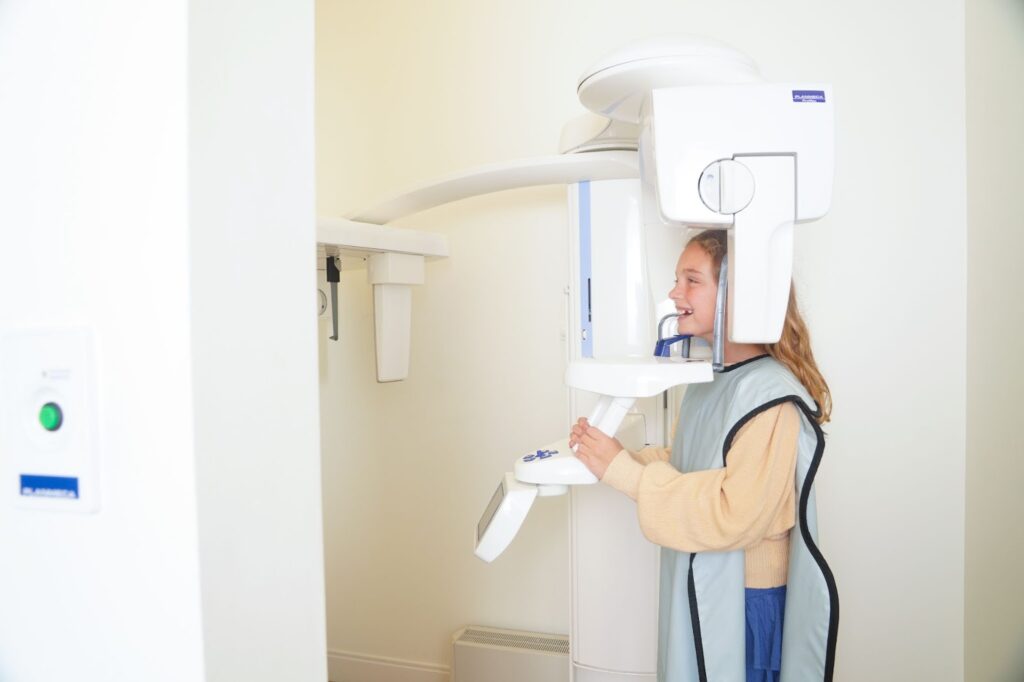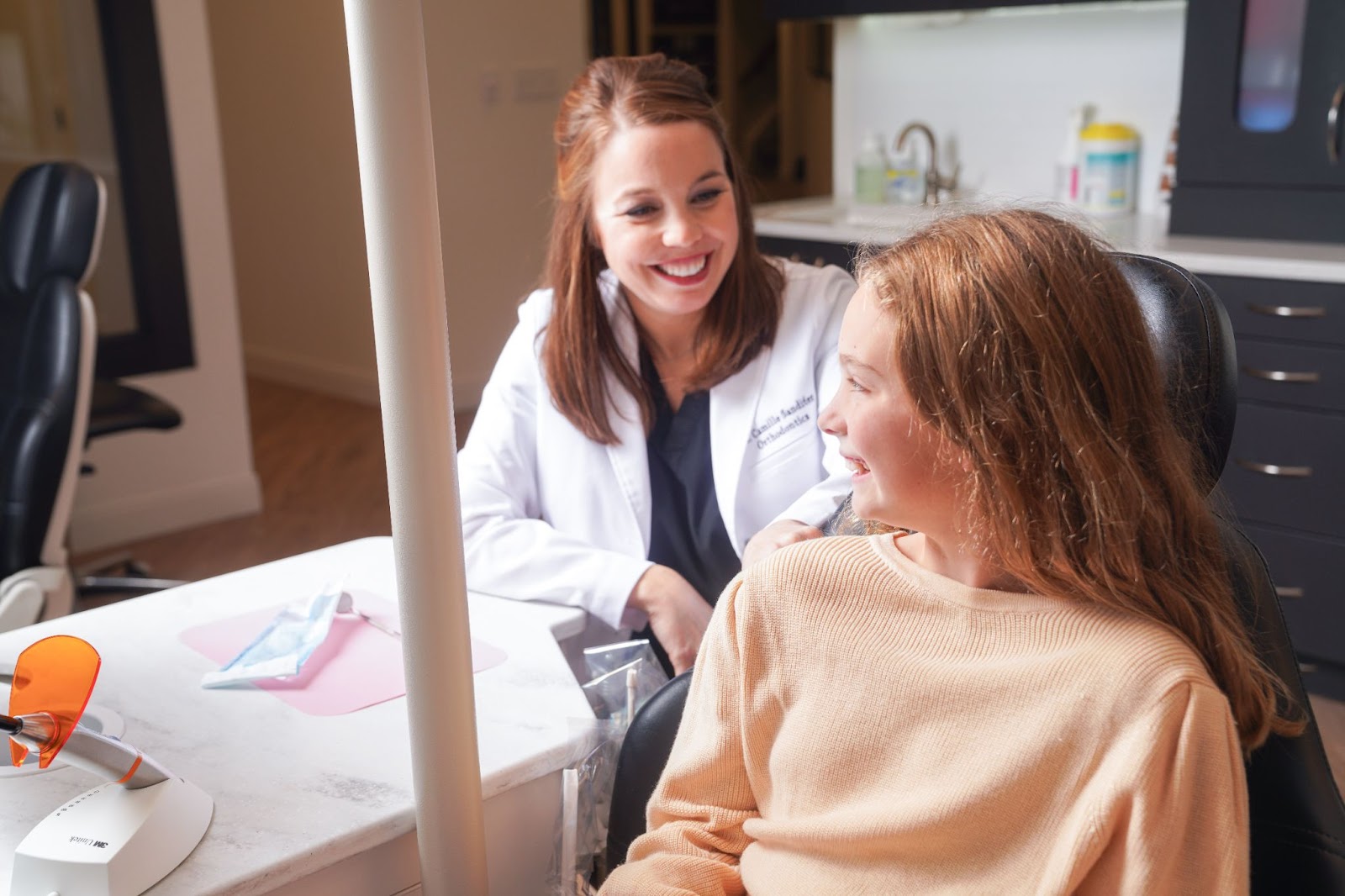Timing is crucial, especially when it comes to orthodontic treatment. Planning for your child’s smile can feel overwhelming, but don’t worry! Sandifer Orthodontics is here to help. Dr. Sandifer agrees with the American Association of Orthodontists recommendation that all children have their first orthodontic consultation by age seven. Many people think that you need a referral to an orthodontist, but that is not the case. If you wait until all the permanent teeth are in, sometimes, it can be too late to address problems that could have been easily avoided with either treatment or early baby teeth removal.
It’s all about being proactive instead of reactive with your child’s oral health. This early consultation allows her to diagnose dental issues before they become more serious. Early orthodontic intervention can prevent the need for complex treatment later on.
This approach, known as a two-phase treatment, offers several benefits. So, what exactly is two-phase treatment, and how can it help your child? Let’s explore!
What is Two-Phase Orthodontic Treatment?
Two-phase orthodontic treatment is a specialized process that involves two separate phases of orthodontic treatment with a break in between. The first phase typically begins when the child has a mix of baby and permanent teeth. The second phase follows once the child has most or all of their permanent teeth.
Two-phase treatment is vital in giving your child a healthy, functional, and beautiful smile that will last a lifetime. This treatment approach aims to establish a working relationship between the teeth and jaws, improve alignment for a straighter smile, and position the teeth and jaws for pleasing facial symmetry.
Qualifying for Two-Phase Treatment
After thoroughly examining your child’s mouth, Dr. Sandifer may recommend a two-phase treatment to create a better environment for the growth of permanent teeth. The first phase of treatment may be suggested if:
- Your child is prone to a specific problem that we want to prevent (preventive treatment)
- Your child already has a developing problem that we want to intercept (interceptive treatment)
- Your child requires guidance in the growth of the jaw bones supporting the teeth (growth modification)
By timing the first phase of orthodontic treatment to align with dental development stages, we can take advantage of your child’s natural growth and development, maximizing the potential for improving or correcting any orthodontic issues early on.
Many common dental problems are easier to treat in growing children and may require more invasive treatment if addressed after most growth has occurred. Early treatment can provide lasting results or reduce the impact of these issues. However, most patients will still need a second phase of treatment to complete the alignment started in the first phase.

How Does Two-Phase Treatment Work?
To understand how two-phase treatment works and how it can benefit your child, it’s essential to grasp the details of each phase and what happens during the resting period between them.
Phase One
Phase one treatment aims to assist the jaw’s development to accommodate your child’s permanent teeth and improve the alignment of their upper and lower jaws. This treatment method offers improved biting, chewing, and digestion benefits. It can also reduce the risk of tooth damage due to crowding, misalignment, or malformed jaws. Additionally, phase one treatment can boost self-esteem and self-confidence, which are crucial for our younger patients.
A successful first phase contributes to long-term stability, with the teeth maintaining their new positions. Before initiating the second phase, a resting period is necessary.
Resting Period
During the resting period, which follows a successful first phase, your child’s remaining permanent teeth can erupt naturally. It’s best to allow them freedom of movement during this time, so retainers or fixed appliances are typically avoided.
Phase Two
After establishing a diagnosis and creating a customized treatment plan during the first phase, Dr. Sandifer will plan the best time to start phase two. This phase is usually done once your child’s permanent teeth erupt. Braces or clear aligners are often used during this phase, and once the treatment is complete, retainers are necessary to maintain the newly straightened smile.
If you decide to proceed with two-phase treatment, you can help maximize its benefits by following our recommendations for maintenance and care, including:
- maintaining excellent dental hygiene
- attending scheduled appointments
- visiting the regular dentist every six months
- avoiding foods that can damage the appliances
- maintaining a healthy diet.

Explore Customized Two-Phase Treatment with Sandifer Orthodontics
At Sandifer Orthodontics, we believe in personalized treatment plans tailored to each child’s needs. Dr. Camille Sandifer and her skilled team will help find the best orthodontic treatment for your child.
If you want to learn more about two-phase orthodontic treatment and how it can improve your child’s oral health, contact us today to schedule your free, no-obligation consultation in Jackson or Brandon. Let us help your child achieve their best and brightest smile!
